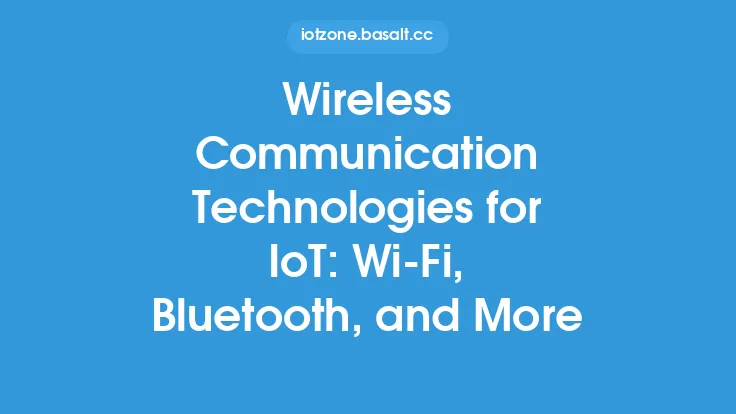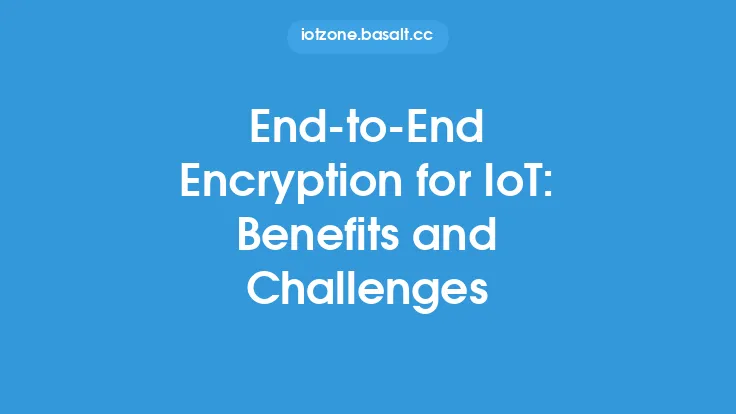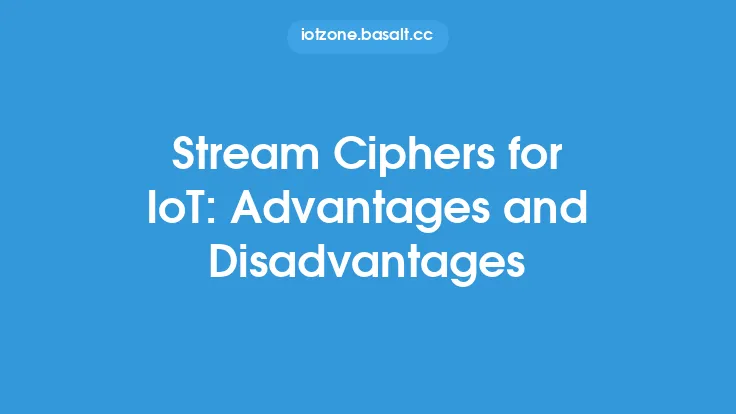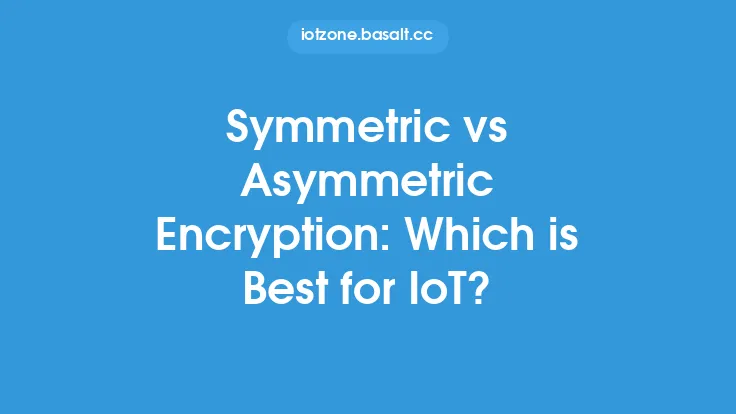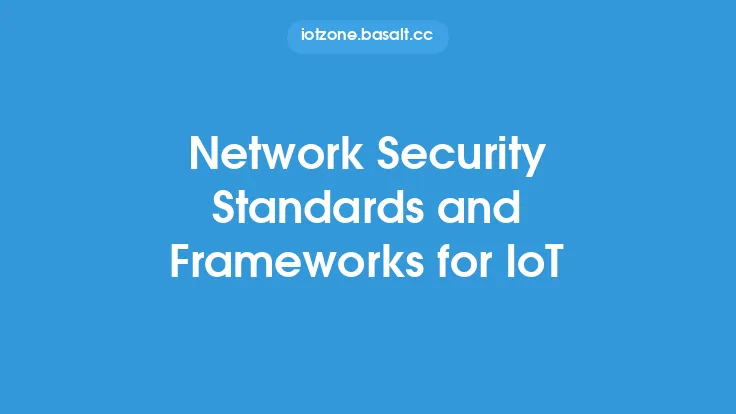The Internet of Things (IoT) has revolutionized the way we live and work, with an increasing number of devices becoming connected to the internet. However, this increased connectivity also brings with it a host of security concerns, particularly when it comes to data encryption. One of the most critical components of IoT security is the use of block ciphers, which are used to encrypt and decrypt data. In this article, we will delve into the world of block ciphers, comparing and contrasting some of the most commonly used algorithms, including AES, DES, and others.
Introduction to Block Ciphers
Block ciphers are a type of symmetric-key encryption algorithm that operates on fixed-length blocks of plaintext and ciphertext. They are widely used in IoT devices due to their efficiency, security, and ease of implementation. Block ciphers work by dividing the plaintext into fixed-length blocks, and then encrypting each block using a secret key. The resulting ciphertext is then transmitted or stored, and can be decrypted using the same secret key. Block ciphers are commonly used in IoT devices, such as smart home devices, wearables, and industrial control systems.
AES: The Gold Standard of Block Ciphers
The Advanced Encryption Standard (AES) is widely considered to be the gold standard of block ciphers. Developed by the National Institute of Standards and Technology (NIST), AES is a symmetric-key block cipher that uses a variable block size and key size. AES is highly secure, efficient, and widely supported, making it the most commonly used block cipher in IoT devices. AES uses a substitution-permutation network (SPN) structure, which provides excellent security against various types of attacks, including differential and linear cryptanalysis. AES is also highly flexible, with support for various key sizes, including 128, 192, and 256 bits.
DES: The Legacy Block Cipher
The Data Encryption Standard (DES) is a legacy block cipher that was developed in the 1970s. While DES was once widely used, it has largely been replaced by AES due to its limited security and efficiency. DES uses a fixed block size of 64 bits and a key size of 56 bits, which is relatively small compared to modern block ciphers. DES is also vulnerable to various types of attacks, including brute-force attacks and differential cryptanalysis. While DES is still supported in some legacy systems, it is no longer recommended for use in IoT devices due to its limited security.
Other Block Ciphers: Blowfish, Twofish, and Camellia
In addition to AES and DES, there are several other block ciphers that are commonly used in IoT devices. Blowfish is a fast and efficient block cipher that uses a variable block size and key size. However, Blowfish has been shown to be vulnerable to various types of attacks, including differential cryptanalysis. Twofish is another block cipher that was developed as a successor to Blowfish. Twofish uses a variable block size and key size, and is highly secure and efficient. Camellia is a block cipher that was developed in Japan, and is widely used in IoT devices. Camellia uses a variable block size and key size, and is highly secure and efficient.
Comparison of Block Ciphers
When it comes to choosing a block cipher for IoT encryption, there are several factors to consider, including security, efficiency, and flexibility. AES is widely considered to be the most secure block cipher, due to its large key size and secure SPN structure. However, AES can be slower than other block ciphers, such as Blowfish and Twofish. DES is the least secure block cipher, due to its small key size and vulnerability to various types of attacks. Camellia is a good alternative to AES, due to its high security and efficiency.
Implementation Considerations
When implementing block ciphers in IoT devices, there are several considerations to keep in mind. First, the block cipher must be implemented correctly, with proper key management and padding. Second, the block cipher must be optimized for the specific IoT device, taking into account factors such as power consumption and memory usage. Third, the block cipher must be integrated with other security protocols, such as authentication and integrity checking. Finally, the block cipher must be regularly updated and maintained, to ensure that it remains secure and efficient over time.
Security Considerations
When using block ciphers in IoT devices, there are several security considerations to keep in mind. First, the block cipher must be used with a secure key management system, to prevent unauthorized access to the encryption key. Second, the block cipher must be used with a secure mode of operation, such as CBC or GCM, to prevent various types of attacks. Third, the block cipher must be regularly updated and maintained, to ensure that it remains secure and efficient over time. Finally, the block cipher must be used in conjunction with other security protocols, such as authentication and integrity checking, to provide comprehensive security for the IoT device.
Conclusion
In conclusion, block ciphers are a critical component of IoT security, providing efficient and secure encryption for data transmitted and stored by IoT devices. AES is widely considered to be the gold standard of block ciphers, due to its high security and efficiency. However, other block ciphers, such as Blowfish, Twofish, and Camellia, may also be suitable for use in IoT devices, depending on the specific requirements and constraints of the device. By understanding the strengths and weaknesses of different block ciphers, and implementing them correctly and securely, IoT device manufacturers can provide comprehensive security for their devices, and protect against various types of attacks and threats.
